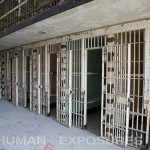More than 11% of youthful prisoners are there on a misdemeanor offense, and more than a third are incarcerated on non-person felonies – crimes that didn’t include confrontations with another person.
One of the largest such crimes is larceny. In fact, more youths were jailed in Virginia on a primary conviction of larceny than any other offense. And while that may sound a bit frightening, consider that Virginia has the lowest threshold in the nation for felony larceny: $200. That $200 threshold hasn’t changed since 1980, with the result that theft of a ubiquitous cell phone or a college textbook now meets the definition of felony larceny, with a much higher potential prison sentence. If the definition had simply kept pace with inflation, that threshold would be $565 today. Is that really our idea of felony larceny and a community risk?
The result is that youths are jailed in Virginia for crimes that would be misdemeanors in every other state, driving up the state’s incarceration rates and costs.
More importantly: Non-violent youths who may have simply made a mistake are put in a prison environment with more hardened criminals. Removed from their family (often hundreds of miles away) and other community support networks like their local church, they are more likely to turn to the internal “support networks” of a juvenile prison – and that frequently leads to a worsening turn, not a better one.
One result: Virginia’s rearrest rate three years after release from juvenile correctional centers is 80%, even while recidivism rates in several other states is declining.
This process is expensive, too.. Virginia’s two existing juvenile correctional centers cost $28-35 million each, or about $150,000 per youth per year. In other states, the daily cost of incarcerating a single youth is about $240; in Virginia, the cost soars to more than $400.
To its credit, the Virginia Department of Juvenile Justice has already begun instituting reforms – closing most of the big facilities and opening wings in their remaining facilities with a high premium on workers trained in both security and rehabilitation.
Chris Braunlich, vice president of the Thomas Jefferson Institute for Public Policy, says:
The paper suggests going the extra mile by decentralizing the juvenile justice system even further. A youth incarcerated in a prison that may be up to five hours away from their community is cut off from the resources most likely to aid him or her in rehabilitation and a return to a law-abiding life. Parental communication may be severed for disciplinary reasons, and home-based faith institutions are unable work early-on to help transition youth into jobs, school, and a better life.
This is particularly the case for those with mental health disorders. More than 65% percent of youths admitted to the Reception and Diagnostic Center for the DJJ had symptoms of at least one mental health disorder and more than three quarters needed mental health treatment. While services are available in prison, they are far more effective if the opportunity exists to establish early relationships with the mental health providers in the communities to which a youth will return.
Yet, even though many local facilities are in position to provide youths with more effective re-entry tools, education, family support systems and job connections, a perverse financial disincentive exists to ship the offenders far away from home. While localities do not pay the cost of youths committed to the state, they are responsible to pay most of the cost of local detention or community-based treatment.
Thus, the state makes the greater investment in centralized structures which are less effective, while making only a minor investment in community-based programs that are demonstrated to reduce recidivism by 7-22%.
High costs. High recidivism rates. Less effectiveness. If a government program costs more than the average and isn’t having the desired outcomes, it should be ripe for review. So, too, is Virginia’s juvenile justice system.










